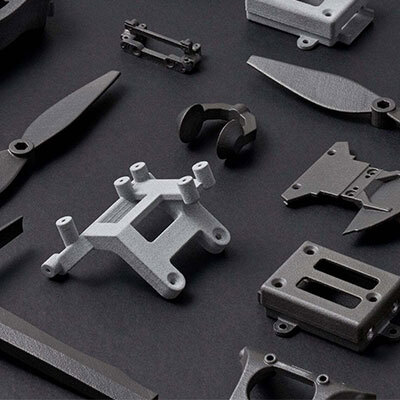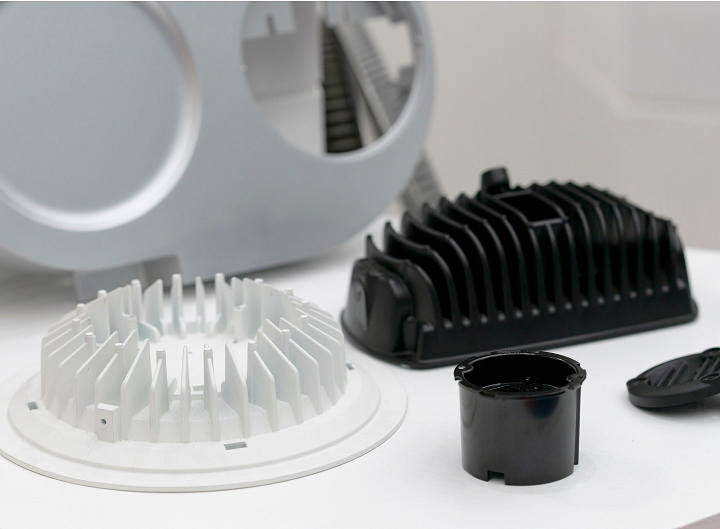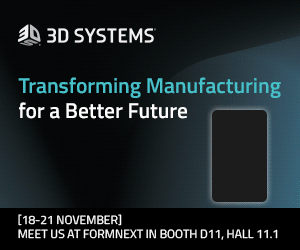Less than a month ago, global digital manufacturing platform Shapeways became the latest AM industry company to announce that it was going public through an Agreement and Plan of Merger and Reorganization with special purpose acquisition company (SPAC) Galileo Acquisition Corp. (NYSE: GLEO), which will be renamed SHPW, for Shapeways Holdings, Inc., on the New York Stock Exchange. This partnership puts Shapeways at a $410 million pro forma enterprise value, and is expected to offer more than $195 million in net proceeds to the company, including a $75 million fully committed common stock PIPE.
I’m betting the company will become even more valuable after its latest announcement: Shapeways is adding six new verified traditional manufacturing capabilities to help scale the production demands of its many customers.
When our Executive Editor Joris Peels spoke to Shapeways CEO Greg Kress about the company’s SPAC merger earlier this month, he said that Shapeways was “positioned for scale” and “becoming a critical component supply chain, complimenting other manufacturers with low-volume, high-mix and serial applications.” With this expansion of its end-to-end digital manufacturing platform, it seems that the company is well on its way.
“Shapeways’ goal is to give our customers around the world the flexibility to scale on-demand production seamlessly while maintaining the highest levels of quality. By offering more options for production, customized fulfillment and improved supply chain agility for distributing end-use parts, we provide the manufacturing support and continuity needed to skyrocket business success,” Miko Levy, CRO at Shapeways, said in a press release.
Founded in 2008, Shapeways is headquartered in NYC, with ISO 9001-compliant manufacturing facilities in Long Island City and the Netherlands, in addition to a global network of partners that are able to deliver a wide range of manufacturing and service delivery options to customers. As volume demands continue to grow, these six new conventional methods of manufacturing will help Shapeways expand its reach and offer customers even more ways to make high-quality parts than just 3D printing.
These new capabilities are:
- CNC machining, a subtractive process that uses computerized controls to remove materials to create parts
- Injection molding, which pours molten liquid into a mold that later solidifies into the part
- Machine tooling, which is the engineering of tools and jigs to make parts
- Sheet metal, often used to make very industrial-grade parts for applications in industries like aerospace and automotive
- Vacuum casting, which draws liquid into a mold, where the part is formed, using a vacuum
- Urethane casting, or silicone molds filled with polyurethane
Shapeways offers full traceability across all its traditional and digital manufacturing methods, so customers who need quality parts at scale for applications in a wide array of industries, including aerospace, automotive, industrial, medical, and more, need not worry. Even with these additional manufacturing methods, Shapeways is continuing its vendor-agnostic approach to material and hardware providers in its partner network.
Even we can admit that 3D printing, while definitely a flexible option, is not always the best process for some manufacturing jobs. There are advantages and disadvantages to additive manufacturing, just like there are with technologies like CNC machining and injection molding, the latter of which is often used by companies on the verge of mass production. In addition, often 3D printing is combined with another subtractive manufacturing process to achieve the best possible outcome. The fact that Shapeways caters to both digital and traditional manufacturing technologies means that it can reach even more customers.
(Source/Images: Shapeways)
Subscribe to Our Email Newsletter
Stay up-to-date on all the latest news from the 3D printing industry and receive information and offers from third party vendors.
Print Services
Upload your 3D Models and get them printed quickly and efficiently.
You May Also Like
Snapmaker Secures Series B Backed by Xiaomi Founder’s Network and China’s Investment Elite
Desktop 3D printer manufacturer Snapmaker has gotten a series B round. The round is led by Hillhouse Ventures and Meituan. Cowin Capital and Orient Securities Capital dipped in for another round,...
Registration Rates for Additive Manufacturing Strategies 2026 Increasing This Week
It may not seem like it, but February is right around the corner, and that means it’s almost time for our 9th annual Additive Manufacturing Strategies event. Returning to New...
LEGO’s First Mass-Produced 3D Printed Element Is Now in Stores in a New Holiday Set
Back in September, 3DPrint.com reported that LEGO was preparing to release its first mass-produced 3D printed element inside an upcoming LEGO Christmas set. At the time, details were limited to...
Formnext 2025: Day Three: We Are the Champignons
Closing out the Champ bar and sitting in the lobby of the Marriott is perhaps not the most healthy of pastimes. Consuming a tower of mini burgers pinned to chicken...


































